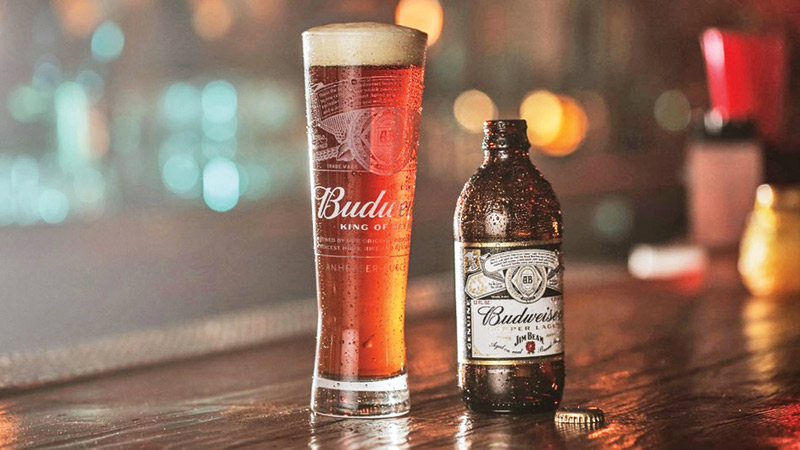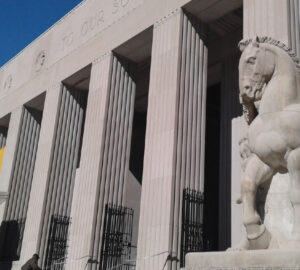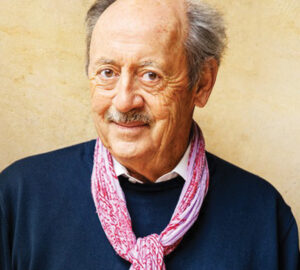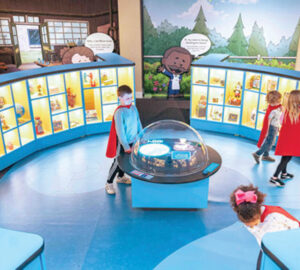south st. louis
This ought to save serious drinkers a few seconds of the precious time they need to get right to the next beverage: Bourbon with the chaser built right in. Well, it’s still just the beer part of the chaser’s onetwo punch, if a chaser means you’re supposed to slam down a shot of the hard brown stuff and follow with beer to mellow it out, I guess. What’s the first part of the process supposed to be—pleasurable? After a slug of whiskey, even the toughest guys wince in pain, like someone just whacked them upside the head with a tire iron. You see, our town’s most-beloved ginormous south-side brewery and Jim Beam have collaborated on a beer called Budweiser Reserve Copper Lager, aged on bourbon barrel staves which, supposedly, create a toasted oak aroma. It also, according to a press release, features vanilla notes. One might expect that sensual feature in Breyers ice cream, not Budweiser … but what I know is that over the last 30 years or so, I’ve had plenty of Breyers to give me a respectable beer belly, but no bourbon or beer to give it that nice ‘finish.’ Copper Lager will be available through the holidays in special heritage bottles and on draft at bars.
maryland heights
He shoots, he scores! It’s always fun for Blues fans to watch a puck hit the back of the net, especially when it results in a win. And now, we all score! Ground has been broken—again—for the team’s new practice facility, a $78 million undertaking near Hollywood Casino that demonstrates just how important sheets of ice and Zambonis are to the metro. This won’t be enough ice to replace what’s disappearing from the polar regions every, say, 40 seconds, but it’s enough to encompass three indoor rinks and one covered outdoor rink. Officially called the St. Louis Community Ice Center, the complex also will include restaurant and retail space. Before the ‘official’ groundbreaking on this 25-acre, 277,000-square-foot dream come true, much digging and earthmoving already had begun, so a projected September 2019 completion date might be realistic. (Really?!) Anyhow, our perennial ‘maybe next year’ NHL Stanley Cup-hopeful club will get its new practice space, and the metro enough ‘rinkage’ to grow amateur and college hockey here. There will be room inside for Mercy sports medicine services and a 12,700-square-foot St. Louis Ice Sports Hall of Fame. In warmer months, the outdoor rink will double as a venue for more than 4,000 patrons to attend concerts, festivals and the like. Maryland Heights will own the complex; officials predict an annual economic impact of $20 million. Meanwhile, the Blues will kick in $100,000 of development funds for a Chesterfield rink project, as well as a $10,000 annual donation to youth hockey organizations.
 u.city
u.city
Out on the northwestern end of U. City, at Olive and I-170, there’s been plenty of disagreement about whether to allow a deep-pockets developer to build a big-box complex like a (hush-hush) Costco membership warehouse in Ward 3, an area that’s puzzled real estate professionals and city officials for years. Meanwhile, residents and businesspeople fret. Public meetings in the Mandarin House restaurant’s banquet space have been so well attended that police have had to turn people away. Well, one shoe has dropped: The city’s tax commission has approved a TIF for the area, which would displace some homeowners, essentially evicting some, and interrupt business as usual for the predominantly Asian restaurants in the metro’s de facto Chinatown. Some also have criticized this as a big-money move that’s insensitive to race, given that affected neighborhoods are largely black. The next official decision rests on the city council’s shoulders. The $190 million mixed-use project—a big-box retail anchor, office space, apartments, maybe a hotel— stands to receive a 20-year, $70 million adjustment via the TIF plan. That’s tax-increment financing, which is like a business ‘paying it forward’—to itself. A TIF freezes property assessments, allowing owners to use the tax increases from development over a specified period to help finance a project. (Hmm. I think we need a TIF for our tiny condo that would allow us to get rid of it, plus some nettlesome neighbors, and help us build our own McMansion on the additional acreage, just for us. Yeah. That sounds like a plan.)
town and country
‘Meet the new boss/Same as the old boss’ … well, not so much in this case. TD Ameritrade Holding Corp. has laid off another 38 employees, bringing the number of St. Louis-area workers it has cut to 1,208 since its $4 billion buyout of Scottrade Financial Services last September. Remember them? Scottrade? It was a discount brokerage here that spent a whole bunch of money just to have its name attached for a few years to that big hollow building where the Blues and big name musical acts play. That ‘attrition’ rate is right on track for the corporation’s estimated 1,300 men and women, of an approximate 1,800 former Scottrade people employed in the StL, eventually to be ‘outplaced.’ Every now and then, you see PR from TD Ameritrade of Omaha, Nebraska, that it’s adding a few hundred workers here, scores more there. In any event, for anyone intent on understanding the word salad common to the language in financial reports, since the Scottrade acquisition, TD Ameritrade had realized about $212 million in ‘synergies’ through June. And since synergies are a good thing, it’s all good. Right?
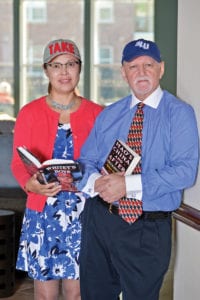
notable neighbors: st. louis
The pitcher, who probably looks a lot like Adam Wainwright, is set to throw to a batter who has distinctly Asian features. Two Harry Weber bronzes, now being fashioned in the Lou, will be installed on opposite sides of the globe next year to commemorate the 40th anniversary of the sister-city relationship between Nanjing, China, and St. Louis—the pitcher to be in Nanjing, the batter probably in the Ballpark Village complex. This heavy-metal concept was the idea of Tim Hermann, a lifelong St. Louisan and CEO of a locally based construction company. In 1979, St. Louis became the first U.S. municipality to formally establish a sister-city relationship with the People’s Republic of China. But first, we must introduce Hermann’s personal odyssey as an important thread that holds the tapestry of this story together. About eight years ago, he was chasing consulting opportunities and living in Shenzen, a city in southern China about as far from Nanjing as St. Louis is from NYC, when a woman teaching Mandarin said the equivalent of, “Have I got the girl for you!” Her sixth sense told her that Jian Ping, a former teaching colleague, would be a good match. Hermann, intrigued, took her up on the suggestion and started texting using a translation app. Today, they’re engaged. He calls her JP, and she hails from Nanjing. Serendipity, Hermann calls it. “What are the chances of a St. Louis boy, living in a country of 1.4 billion people, meeting and falling in love with a girl from Nanjing?” It took a while to meet in person, but a certain spark transcended linguistic challenges and cultural differences. Many times they’d have a ‘third wheel’ along with them: a translator. Hermann is quite an accomplished lensman, JP is very creative, and photography has become a language they both speak fluently. While they were in town for a few weeks last month, they set up a base of operations for her: JP is taking English lessons at UMSL and investigating volunteer opportunities. Meanwhile, Hermann checked in with Weber on how the baseball players are evolving. Weber had thought the original concept, a pitcher and catcher, was too static; a pitcher and batter would be dynamic. Weber’s work is in the moment, as anyone who’s been to Busch Stadium knows. His statue of our legendary No. 6, Stan Musial, is in full swing. Bob Gibson has just let go of a pitch. Ozzie stretches to snag one at short. Weber’s pitcher and batter don’t represent competition, but cooperating to play a game fairly, and well. Take the unique energy between The Lou and Chicago that baseball has helped keep humming: Without one force, we wouldn’t have the other. And a celebration of the sister cities’ 40th anniversary tips the cap to economic and cultural cooperation. After all, Hermann notes, a Nanjing representative suggested baseball as the connection, even though it isn’t common in China. It took Hermann’s personal brainstorm to bring a suggestion to reality. I guess we could call that serendipity





